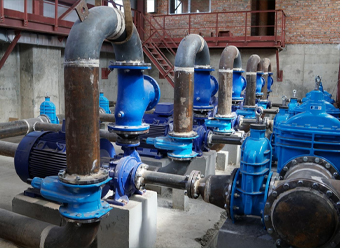English
- Afrikaans
- Albanian
- Amharic
- Arabic
- Armenian
- Azerbaijani
- Basque
- Belarusian
- Bengali
- Bosnian
- Bulgarian
- Catalan
- Cebuano
- Corsican
- Croatian
- Czech
- Danish
- Dutch
- English
- Esperanto
- Estonian
- Finnish
- French
- Frisian
- Galician
- Georgian
- German
- Greek
- Gujarati
- Haitian Creole
- hausa
- hawaiian
- Hebrew
- Hindi
- Miao
- Hungarian
- Icelandic
- igbo
- Indonesian
- irish
- Italian
- Japanese
- Javanese
- Kannada
- kazakh
- Khmer
- Rwandese
- Korean
- Kurdish
- Kyrgyz
- Lao
- Latin
- Latvian
- Lithuanian
- Luxembourgish
- Macedonian
- Malgashi
- Malay
- Malayalam
- Maltese
- Maori
- Marathi
- Mongolian
- Myanmar
- Nepali
- Norwegian
- Norwegian
- Occitan
- Pashto
- Persian
- Polish
- Portuguese
- Punjabi
- Romanian
- Russian
- Samoan
- Scottish Gaelic
- Serbian
- Sesotho
- Shona
- Sindhi
- Sinhala
- Slovak
- Slovenian
- Somali
- Spanish
- Sundanese
- Swahili
- Swedish
- Tagalog
- Tajik
- Tamil
- Tatar
- Telugu
- Thai
- Turkish
- Turkmen
- Ukrainian
- Urdu
- Uighur
- Uzbek
- Vietnamese
- Welsh
- Bantu
- Yiddish
- Yoruba
- Zulu
Telephone: +86 13120555503
Email: frank@cypump.com
Dec . 10, 2024 04:04 Back to list
1 HP Water Pump Performance Analysis in Various Lifting Capacities and Efficiency Metrics
Understanding the Lifting Capacity and Efficiency of a 1 HP Water Pump
Water pumps are essential devices used in various applications such as irrigation, drainage, and water supply systems. Among the myriad types of pumps available, the 1 horsepower (HP) water pump is commonly encountered in both residential and agricultural settings. When selecting a water pump, two significant factors to consider are its lifting capacity and efficiency. In this article, we explore what these terms mean and how they relate to the performance of a 1 HP water pump.
Lifting Capacity
Lifting capacity refers to the maximum height or elevation that the pump can raise water from its source to the point of discharge. This capability is measured in feet or meters and is often referred to as the head of the pump. For a 1 HP water pump, the lifting capacity can vary depending on several factors, including the design of the pump, the type of motor, and the specific application requirements.
Typically, a 1 HP water pump can achieve a lifting capacity ranging from 20 to 30 feet in optimal conditions. However, it is crucial to note that the lifting capacity decreases as the distance to the discharge point increases or if the pump is expected to overcome additional obstacles such as friction in the pipes or the weight of the water itself. When selecting a pump, it’s essential to calculate the total dynamic head (TDH), which includes the vertical lift, the friction loss in the pipes, and any additional pressure requirements.
Efficiency
Efficiency in water pumps is a measure of how well the pump converts electrical energy into hydraulic energy, expressed as a percentage. Specifically, it is the ratio of the hydraulic power delivered by the pump to the mechanical power consumed by the motor. A higher efficiency rating indicates that more of the input energy is being used for moving water rather than being lost as heat or through other forms of waste.
For a 1 HP water pump, the efficiency typically ranges between 60% to 80%. Several factors can influence this efficiency, including the design of the impeller, the quality of materials used in manufacturing, and the appropriateness of the pump selection for a specific application. It is essential for users to consider the pump's operating conditions and to maintain the pump effectively to ensure it runs at optimal efficiency.
'1% hp water pump lifting capacity and its efficiency in various ...'

Factors Influencing Performance
1. Type of Water Pump There are several types of pumps, including centrifugal pumps, submersible pumps, and positive displacement pumps. Each type has its specific lifting capacities and efficiencies. For instance, centrifugal pumps are widely used for their high flow rates, while submersible pumps are favored for deep well applications.
2. Water Quality The presence of solids or contaminants in the water can affect performance and efficiency. Pumps designed to handle clean water may struggle when faced with muddy or debris-laden water, leading to decreased efficiency and potential damage.
3. Installation and Maintenance Proper installation is crucial for maximizing efficiency. Misalignment, incorrect pipe sizing, and inadequate maintenance can lead to increased energy consumption and reduced performance. Regular inspection and maintenance of components like the motor and impeller can significantly enhance the pump's lifespan and efficiency.
4. Application Requirements Understanding the specific application requirements, such as flow rate and pressure needs, is vital for selecting the right pump. Oversizing or undersizing a pump can lead to inefficiencies and operational challenges.
Conclusion
A 1 HP water pump is a versatile and commonly used device in various settings. Understanding its lifting capacity and efficiency is crucial for selecting the right pump for your needs. By considering factors such as pump type, water quality, and installation practices, you can ensure optimal performance and efficient operation, ultimately saving on energy costs and extending the life of the pump. With the right knowledge and proactive maintenance, users can maximize the potential of their 1 HP water pump in any application.
-
ISG Series Vertical Pipeline Pump - Chi Yuan Pumps Co., LTD.|High Efficiency, Energy Saving, Low Noise
NewsJul.30,2025
-
ISG Series Vertical Pipeline Pump- Chi Yuan Pumps|High Efficiency&Low Noise
NewsJul.30,2025
-
ISG Series Vertical Pipeline Pump-Chi Yuan Pumps Co., LTD.|High Efficiency&Energy Conservation
NewsJul.30,2025
-
ISG Series Vertical Pipeline Pump - Chi Yuan Pumps Co., LTD.|Advanced Hydraulic Design&Energy-Efficient Solutions
NewsJul.30,2025
-
ISG Series Vertical Pipeline Pump - Chi Yuan Pumps Co., LTD.
NewsJul.30,2025
-
ISG Series Vertical Pipeline Pump - Chi Yuan Pumps Co., LTD.|energy-efficient fluid handling&industrial durability
NewsJul.30,2025










